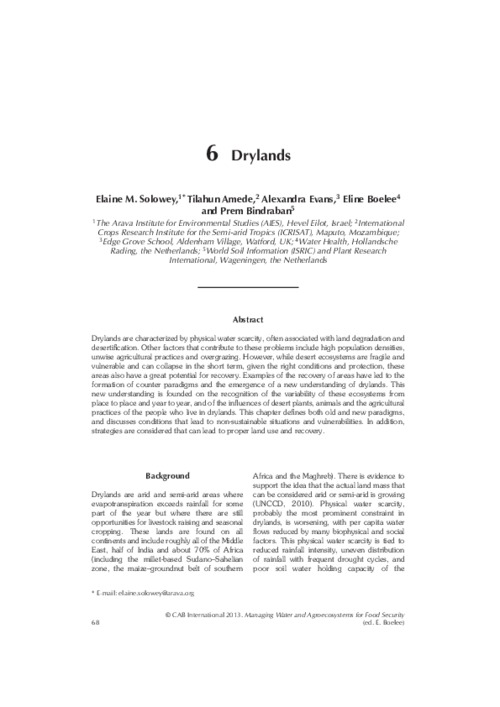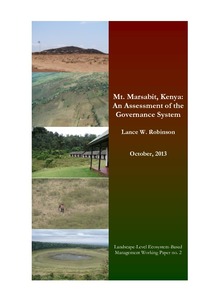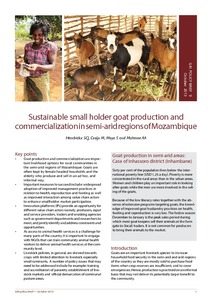Drylands
Drylands are characterized by physical water scarcity, often associated with land degradation and
desertifi cation. Other factors that contribute to these problems include high population densities,
unwise agricultural practices and overgrazing. However, while desert ecosystems are fragile and
vulnerable and can collapse in the short term, given the right conditions and protection, these
areas also have a great potential for recovery. Examples of the recovery of areas have led to the








